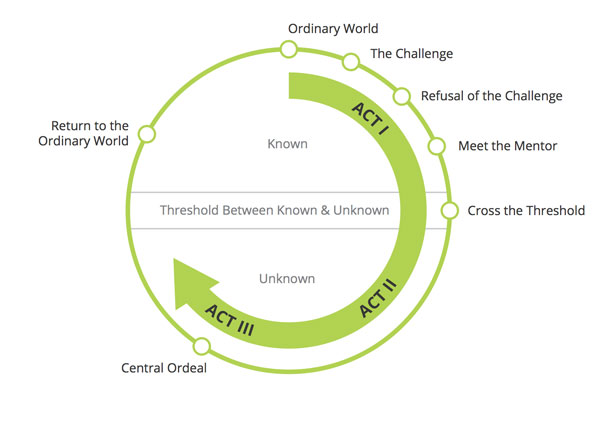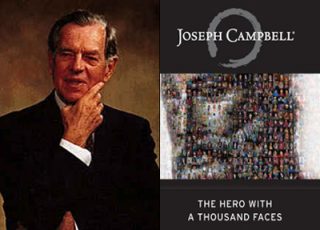Category Results:
Top Content Marketing Trends For 2018
The content marketing landscape shifts dramatically from one year to the next. Trends that seemed promising just a few months ago have since been abandoned, making way for new developments. All signs point to even bigger changes in 2018, with the end of net neutrality and the much-promised adoption of artificial intelligence and the Internet of Things spurring an exciting but challenging marketing arena.
New Trends For 2018
Legislative changes may drive the most significant content marketing developments of 2018, but consumers will also see shifts prompted by the internet’s rapidly-changing ecosystem.
The End of Net Neutrality
The Federal Communications Commission (FCC) will end 2017 with a vote on net neutrality, which prohibits internet providers from blocking, speeding up, or slowing down select content. All signs point to the FCC voting against net neutrality, sparking a sea change in the very structure of the internet in the United States. Predictions for the post-net neutrality internet differ considerably, but many agree that providers will largely focus on bundling services in an approach modeled off of cable television.
What does this mean for content marketing? A lack of net neutrality will eliminate the even playing field established for businesses of all sizes. Smaller companies hoping to expand through revolutionary marketing campaigns could face more of an uphill battle as they compete against established internet giants. Far-reaching marketing campaigns may prove less effective, especially as internet users restrict social media accounts based on which are included in the most affordable bundles.
Internet of Things: Taking Content Off the Screen
Sight no longer constitutes the primary means of interacting with a mobile device. Siri and other voice recognition tools make it easier for users to obtain much-needed information. This exchange will continue to move beyond Siri and Alexa in 2018, with new apps and wearable technology harnessing the power of sight, touch, even smell. Greater content diversity will enable marketers to better target their message to unique customer niches. Expect a wider variety of smart home speakers and a renewed emphasis on smart watches — perfect conduits for the Internet of Things. Experts at Forrester anticipate a “tsunami wave of voice activated devices shipping to consumers in 2018.”
User-Generated Content
Trust in institutions remains at an all-time low, but internet users are still willing to heed advice from loved ones. In its Global Trust in Advertising report, Nielsen revealed that 83 percent of respondents trusted those they knew. Conversely, just 46 percent of those surveyed admitted to placing any trust in social network ads. In 2018, brands will capitalize on this discovery by moving past simple reposts and retweets. Instead, companies will leverage high-quality consumer-driven content and integrate it into larger social media campaigns as seamlessly as possible.
Existing Trends Still Going Strong
Some of 2018’s biggest content marketing trends will be carry-overs from 2017. Don’t expect an exact replication, however, as existing trends will adapt to meet the ever-increasing personalization of the online experience.
Original and Addictive Content
From Netflix Originals to intriguing new blog posts, internet providers and search engines will continue to favor unique content that immediately captures’ viewers interest. Demand for ‘spun’ content is at an all-time low, in part because search engine algorithms largely rely on quality, as opposed to keyword stuffing. This has been the case for years, but some companies are slower to grasp the importance of quality content than others. In 2018, the last hangers-on of the keyword stuffing days will see the light and begin to pursue a more strategic approach to content development and management.
Google Rich Answers
Forget landing the first page on Google — the businesses of 2018 will compete for the enticing answer at the top of each list of search results. Known as Google Rich Answers, this useful feature provides direct answer to common queries, rather than forcing users to sift through entries on a typical search engine results page (SERP). Experts at Search Engine Watch claim that Google’s answer box prompts an astounding click-through rate of 32.3 percent.
Irrelevant 2017 Trends
Quick shifts in internet marketing cause select trends to become irrelevant just as businesses get acquainted. In 2018, get ready to bid adieu to extensive cause marketing and fancy pre-recorded videos.
Cause Marketing
At one time, internet users appreciated charitable efforts promoted by the brands they loved most. Companies took advantage of this goodwill and launched cause marketing campaigns, aimed more at favorable PR than at the cause itself. Consumers now see through this ploy, and many express doubts regarding so-called goodwill campaigns. Cause marketing can still work, but companies cannot simply rely on a charitable announcement to increase trust among consumers. Users demand full transparency, and they want charitable initiatives to match the overarching theme and message at the basis of the promoted brand.
Pre-Recorded Videos
Pre-recorded videos may not disappear completely in 2018, but they will become a lesser share of the video marketing sphere. Instead, businesses and consumers will shift their focus away from big budget pre-recorded films and towards on-the-spot videos.
Turns out, video quality doesn’t matter as much to viewers as relevance. FOMO is real, and internet users don’t want to be left behind. Statistics highlighted by Wired indicate that Facebook users spend three times as much time on live videos and are ten times more likely to comment.
If there’s one lesson to be learned from next year’s trends, it’s that internet users demand the most personalized and relevant content possible. Those on the cutting edge of content marketing’s most exciting trends can expect increased customer engagement and loyalty — and everyone else risks falling behind.
How a Common Hollywood Screenwriting Technique Can Transform Your Marketing – Part 3 of 3: The Hero’s Journey For Brands
In my previous posts, I argued that telling stories is the most effective way to market your product or service. I also outlined the history of The Hero’s Journey narrative framework and how Hollywood has used it for years to craft blockbuster story lines. In this post we’ll look at how The Hero’s Journey can be leveraged for your brand.
For your marketing efforts, you can use Joseph Campbell’s, ‘Hero’s Journey’ framework to create compelling stories around your product or service. To review, here is a diagram of that framework.

The key to using the framework in a marketing context is to place your customer into the role of the Hero, and your product or service takes in the role of the Mentor. Once you do this, your marketing story starts to take shape. Whether you are working on a product launch with many marketing touch points or scripting your next marketing video, the ‘Hero’s Journey for Brands’ can help. Obviously this is not a panacea for every piece of marketing collateral you create, but a surprising number of assets can be created or enhanced with this framework.
We use this framework so much in the work we do for our clients that we have created an abbreviated version of the Hero’s Journey specific to content marketing. Our abbreviated steps are:
The Hero’s Journey For Brands
- Ordinary World – We see the Hero in his or her ordinary world.
- The Challenge – We identify the Hero’s need or problem.
- Refusal of the Challenge – They hesitate because change isn’t easy.
- Meet the Mentor – They are introduced to your brand’s value proposition.
- Cross the Threshold – The Hero takes the leap of faith, possibly due to some proof point you can offer.
- Central Ordeal – They agree to adopt/use your product or service.
- The Return – The Hero returns to their ordinary world, their challenge resolved with the help of your product or service.
Ready to put it into practice? We’ve created a PDF worksheet for you to apply the framework to your product or service. To learn more about the ‘Hero’s Journey’ and access the worksheet, download our free E-book:
Or, watch our archived webinar:
How a Common Hollywood Screenwriting Technique Can Transform Your Marketing – Part 2 of 3: The Hero’s Journey
In my previous post, I made the case that marketers are more effective when telling stories because it satisfies a fundamental human desire. In this post we’ll take a look at the history of The Hero’s Journey’s narrative framework.
Story telling predates writing; it has been with us since the dawn of humanity. However, it’s only relatively recently that anyone explored how or why we need to tell stories. At the beginning of the 20th century, Sigmund Freud and Carl Jung were pioneering the field of psychology and uncovered important truths about the human psyche; storytelling gives the present meaning and helps make sense of the world we live in. They introduced the concepts of a collective unconscious and archetypes.

In the 1930’s and 40’s a professor at Sarah Lawrence College named Joseph Campbell taught an introductory course on mythology. His research led to the publication of The Hero With a Thousand Faces, a treatise on storytelling across cultures. Influenced by many of Jung’s ideas, Campbell’s research showed similarities in mythology across cultures. He claimed that these myths are actually different versions of one underlying eternal theme, which he called the ‘mono myth.’ In the mono myth, there is a hero character that goes on a journey, encountering several archetypical characters along the way.
Here are the steps of the Hero’s Journey outlined by Campbell:
- Ordinary World – The Hero begins in an unremarkable world of normalcy.
- Call to Adventure – Our Hero receives a call to head off into the unknown.
- Refusal of the Call – Frequently, the Hero is reluctant to answer the call. This could be due to fear, insecurity, or other reasons.
- Meet the Mentor – The Hero meets a supernatural or spiritual guide.
- Cross the Threshold – This is the point where the Hero crosses from his/her ordinary world into the unknown.
- Tests, Allies, Enemies – The Hero must endure a series of tests or challenges to begin their transformation.
- Approach – Setbacks occur, sometimes causing the Hero to try a new approach or adopt new ideas.
- Central Ordeal – The Hero encounters a major obstacle or hurdle.
- The Reward – The Hero survives death, and earns a reward or accomplishes his/her goal.
- The Road Back – The Hero begins his/her way back to their ordinary world.
- Resurrection – A final test, where the Hero must summon all of his/her knowledge.
- Return With the Elixir – The Hero returns home and applies their new found knowledge or power.
Without meaning to, Joseph Campbell wrote a how-to guide for screenwriters. The Hero With A Thousand Faces became tremendously influential for Hollywood writers who employed the framework to craft plot lines, most notably with George Lucas and Star Wars. In fact, George Lucas claims that without Joseph Campbell, he would “…still be writing Star Wars today.”
Watch a young George Lucas give thanks to Joseph Campbell:
What does this look like in practice? Here’s how Star Wars maps to the Hero’s Journey:
- Ordinary World – Luke at home
- Call to Adventure – Leia’s message
- Refusal of the Call – Luke can’t leave because he has to help with the harvest
- Meet the Mentor – Obi-wan rescues Luke from the sand people
- Cross the Threshold – Luke escapes Tatooine
- Tests, Allies, Enemies – Lightsaber practice, Han and Chewie, stormtroopers
- Approach – Luke and allies move towards the Death Star
- Central Ordeal – They free the Princess
- The Reward – They capture the Death Star schematics
- The Road Back – Death Star has moved closer to the Rebel camp
- Resurrection – Luke destroys the Death Star by sacrificing part of his old self (his dependence on machines)
- Return With the Elixir – They are rewarded with medals
Today, the Hero’s Journey framework is everywhere. It is so prevalent in Hollywood blockbusters that it is difficult to find a large studio backed film that doesn’t follow the Hero’s Journey closely. Films like The Matrix, Finding Nemo, The Incredibles, and many, many, more all map closely to Campbell’s framework.
Read the next post, “How a Common Hollywood Screenwriting Technique Can Transform Your Marketing – Part 3 of 3: The Hero’s Journey For Brands.” (coming soon)
If you’d like to learn about the Hero’s Journey and how it can help your brand, download our free ebook here:
Or, watch our archived webinar:
How a Common Hollywood Screenwriting Technique Can Transform Your Marketing – Part 1 of 3: The Content Marketing Dilemma
In this three part series, I’ll examine how marketers are increasingly tasked with creating quality content. I’ll define and outline a narrative framework called ‘The Hero’s Journey,’ and how you can use it to improve your content marketing efforts.
Let’s face it, traditional marketing is dead. Or, at minimum it’s on life support. Content marketing – creating, curating and sharing relevant information and ideas with your customers – is the new normal. The key word here is relevant. When you share knowledge that resonates with consumers you’ve given them a real reason to seek you out and engage with your brand. You have a unique insight or knowledge set. Share it with customers (and potential customers) and you’ve made an investment that can help shape your brand’s perception and define your customer relationships.
If you’re currently engaged in content marketing and find that your content is increasingly ignored ask yourself, is the content too bland to ignite any real interest or too similar to other content to garner attention? There are millions of tweets and blog posts, each proclaiming that ‘quality content is king,’ (and they aren’t wrong). But too few tell you how to improve your content to make it eye-catching, interesting, relevant, and share-worthy. The marketer’s dilemma is then, “How can I consistently create quality content that my customers want to engage with?”
 This contemporary problem can be solved with one of the oldest crafts known to humans, the art of story telling. Specifically, we think the framework of The Hero’s Journey is the perfect structure upon which to build your brand’s story. Ok, ok… I know… you’re probably rolling your eyes right now thinking that this is some solipsistic “liberal arts” nonsense. “What does storytelling have to do with marketing?” The short answer is, “Everything,” but first, let’s take a step back and look at the economic power of storytelling.
This contemporary problem can be solved with one of the oldest crafts known to humans, the art of story telling. Specifically, we think the framework of The Hero’s Journey is the perfect structure upon which to build your brand’s story. Ok, ok… I know… you’re probably rolling your eyes right now thinking that this is some solipsistic “liberal arts” nonsense. “What does storytelling have to do with marketing?” The short answer is, “Everything,” but first, let’s take a step back and look at the economic power of storytelling.
According to the US Department of Commerce, the film industry took in $31 Billion in domestic revenues in 2013. Worldwide, the video game market surpassed $93 Billion during the same period. The US publishing industry took in $27 Billion in 2013. Worldwide, people spend hundreds of billions of dollars to read, watch, or listen to stories in movies, television, books, magazines, newspapers, websites, and so on. The ‘story industry’ is a major force in the global economy.
Harry Potter, World of Warcraft, Real Housewives of Atlanta, and a how-to video on your website have very little in common. Except, each taps into the most basic of human desires; the need to hear and share stories. Savvy marketers realize that pushing product features and benefits aren’t going to cut it any more. They create stories that bring those features and benefits to life and follow the classic creative writing rule of, “show not tell.”
So, if we accept the premise that your marketing can be improved through story telling, how can you make a marketing story pop? This is where the Hero’s Journey framework comes in. What is the Hero’s Journey framework? Stay with me now… we’re taking an elevator straight to the top of the ivory tower of academia….
(BTW, if you’re thinking that this blog is an example of content marketing – Spoiler Alert – you’re right.)
Read the next post, “How a Common Hollywood Screenwriting Technique Can Transform Your Marketing – Part 2 of 3: The Hero’s Journey.”
If you’d like to learn about the Hero’s Journey and how it can help your brand, download our free ebook here:
Or, watch our archived webinar:


